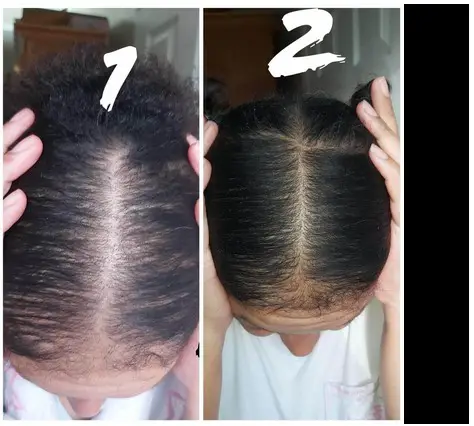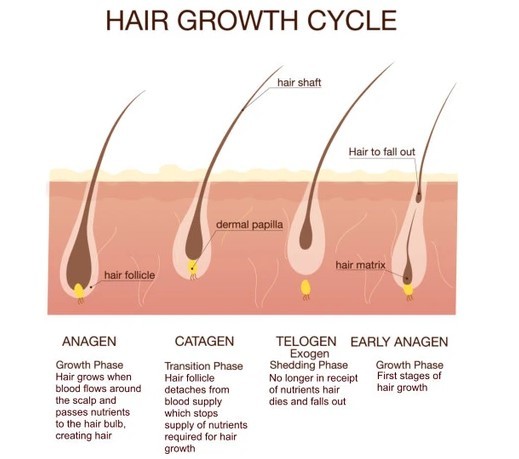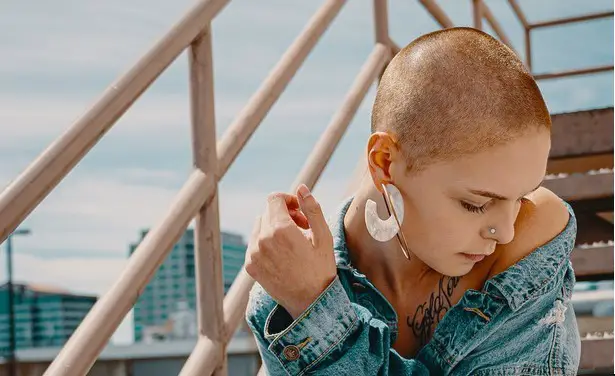Discover empowering female pattern hair loss success stories that offer hope and valuable insights into effective treatments. Learn from real-world experiences and take the first step towards reclaiming your hair and confidence.
Female pattern hair loss is a condition that affects millions of women globally, leading to both physical and emotional challenges. Unlike male pattern baldness, female pattern hair loss often manifests as diffuse thinning rather than receding hairlines or bald spots. This condition can be particularly distressing, as a full head of hair is often considered a sign of beauty and femininity.
Sharing success stories is crucial, especially when it comes to female pattern hair loss success stories. These narratives offer hope and provide valuable insights into various treatments and lifestyle changes that can make a significant difference. Success stories serve as real-world evidence that solutions do exist, empowering women who are navigating the complexities of hair loss.
Key Takeaways
- Female pattern hair loss can be both genetic and non-genetic.
- Early intervention is crucial for reversing hair loss.
- Various treatments like minoxidil and finasteride are available.
- Consult a healthcare provider for a tailored treatment plan.
If you’re looking to understand the underlying causes and classifications of female pattern hair loss, our comprehensive guide on Understanding Ludwig Pattern Hair Loss is an excellent starting point. This resource delves deep into the Ludwig Scale, a tool commonly used to classify the severity of female pattern baldness.
Why Do Some Women Lose Their Hair?
Understanding the root cause of hair loss is crucial for effective treatment. While many immediately think of genetic causes when it comes to hair loss, it’s essential to note that not all hair loss is hereditary. In fact, there are numerous non-genetic causes for hair loss that can affect women at various stages of their lives.
Genetic Causes for Hair Loss
Genetic predisposition plays a significant role in female pattern hair loss, also known as female androgenetic alopecia. This type of hair loss is often characterized by thinning hair on the crown and widening of the part. It’s a condition that can be exacerbated by hormonal changes, particularly during menopause.
Non-Genetic Causes for Hair Loss
On the other hand, non-genetic causes can range from hormonal imbalances, such as thyroid issues, to lifestyle factors like stress and poor nutrition. Conditions like telogen effluvium can occur due to stress, while anagen effluvium is often the result of chemotherapy or other medications. Even environmental factors like pollution can contribute to hair loss.
Here are some of the non-genetic causes for hair loss:
- Thyroid Issues: Imbalance in thyroid hormones can disrupt hair growth.
- Infections and Decreased Immunity: Fighting off infections can divert resources away from hair growth, leading to hair loss.
- Polycystic Ovary Syndrome: Excess androgen production can cause scalp hair loss.
- Contraceptives: Hormones that suppress ovulation can also thin hair.
- Drastic Diets: Extreme dieting can disrupt bodily functions, causing hair loss.
- Inadequate Nutrition: Poor diet can lead to hair loss and reduced hair quality.
- Environmental Conditions: Exposure to pollutants and radiation can cause hair loss.
- Certain Medications: Some drugs can halt or slow down hair growth.
- Hormonal Changes: Fluctuations during postpartum and menopause can lead to temporary hair loss.
- Extreme Stress: High stress levels can cause significant hair loss lasting 6-8 months.
- Cardiovascular Disease: Poor blood vessel health can disrupt hair growth.
Each of these factors can contribute to hair loss in different ways, and understanding them can help in finding the right treatment approach.
For a deeper understanding of how hair grows and what might be interrupting this natural process, consider exploring this Hair Growth Journey. This comprehensive guide offers valuable insights into the lifecycle of hair and provides actionable tips to promote healthy hair growth.
Take Action: If you’re experiencing hair loss, don’t despair. The first step is to identify the underlying cause, which may require consultation with a healthcare provider for proper diagnosis and treatment options. Whether it’s a genetic predisposition or a lifestyle factor, understanding the cause is the key to finding an effective solution.
Are you ready to take control of your hair loss? Discover the most effective treatments and hear real-life hair loss success stories to inspire your own journey to hair regrowth.
Real-Life Female Pattern Hair Loss Success Stories
When it comes to hair loss, the journey can be disheartening. However, there are numerous real-life success stories that offer a glimmer of hope. From female androgenetic alopecia success stories to alopecia hair regrowth success stories, these narratives serve as a testament to the resilience and ingenuity of those who have faced hair loss head-on.
Female Androgenetic Alopecia Success Stories
Women dealing with female androgenetic alopecia often feel isolated, but many have found solace and solutions in treatments like Minoxidil and Finasteride. These medications have turned the tide for countless women, allowing them to regain not just their hair but also their confidence.
My experience with female pattern hair loss
byu/FPHLTH inTwoXChromosomes
Alopecia Hair Regrowth Success Stories
Alopecia areata is another form of hair loss that has seen remarkable turnarounds. From topical treatments to light therapy, the stories of regrowth are both inspiring and informative.
Hair back, my alopecia areata recovery story
byu/NextOTC inalopecia_areata
Telogen Effluvium Stories
Telogen effluvium often occurs due to stress or hormonal changes and is usually temporary. Women who have navigated this challenge report that stress management techniques and dietary changes can significantly improve hair health.
Divine Locks Method: A Mother’s Journey from Hair Nightmare to Rejuvenation
One compelling story is that of a mother who turned her hair nightmare into a journey of rejuvenation through the Divine Locks Method. This method, backed by scientific research, focuses on rejuvenating “pinched straw” Dermal Papillae cells, leading to thicker, healthier locks.
TressAnew by Harmonium: Susan’s Story and the 5-Second “Finger Test”
Another uplifting narrative is Susan’s story with TressAnew by Harmonium. Susan, a 57-year-old woman, discovered the power of a simple 5-second “finger test” to diagnose her hair issues. She then used a 100% natural kitchen remedy to halt a hair-degrading enzyme, leading to natural hair growth.
For those interested in extending their hair length or volume, Ktip Extensions offer a viable solution. These extensions are not only aesthetically pleasing but also easy to manage, making them a popular choice for those looking to enhance their hair’s appearance.
Take Action Now: Don’t let hair loss define you. Explore Susan’s story with TressAnew a proven methods and treatments to reclaim your hair and your confidence. Whether you’re dealing with female pattern baldness or telogen effluvium, there’s a solution waiting for you. Start your Hair Growth Journey today and become another success story in the making.
3 Most Effective Female Pattern Hair Loss Products of Success
The battle against female pattern hair loss is one that many women are fighting, but the good news is that there are effective solutions available. From over-the-counter topical treatments to prescription medications, the market is flooded with products that promise to reverse or halt hair loss. However, among these, three products stand out for their proven efficacy and the plethora of success stories they’ve generated.
Minoxidil and Minoxidil Success Stories Female
Minoxidil is a topical solution that has garnered a reputation for being a reliable treatment for hair loss, particularly for women. Initially used to treat high blood pressure, it was soon discovered that one of its side effects was hair growth. Women who have used Minoxidil report significant hair regrowth and a decrease in hair thinning.
The internet is awash with minoxidil success stories from females, many of whom have seen transformative results within just a few months of use.
Finasteride and Finasteride Success Stories
Another pharmaceutical giant in the hair loss treatment arena is Finasteride. Originally developed to treat enlarged prostates, it was later found to be effective in treating hair loss as well. Unlike Minoxidil, Finasteride is an oral medication. Women who have used this treatment often share their finasteride success stories, detailing how the medication not only helped regrow lost hair but also improved the overall health of their existing hair.
DHT Blockers
DHT blockers are another category of products that have shown promise in treating female pattern hair loss. DHT, or Dihydrotestosterone, is a hormone that has been linked to hair loss in both men and women. By blocking the production of DHT, these products aim to halt hair loss and promote regrowth.
For those who are skeptical about the effectiveness of these treatments, reading a Finasteride Success Story can provide both inspiration and valuable insights. These real-life accounts offer a firsthand look at what it’s like to reverse hair loss successfully.
Take the Next Step: If you’re struggling with female pattern hair loss, don’t lose hope. Each of these products has a track record of success and could be the solution you’ve been searching for. Whether it’s Minoxidil, Finasteride, or DHT blockers supplement, the key is to start treatment as soon as possible for the best results. Take control of your hair loss today and become another success story waiting to be told.
How Does the Hair Grow?
Understanding the science of hair growth is crucial for anyone grappling with hair loss and seeking effective treatments. Hair grows from follicles, tiny sacs in the scalp’s skin layer. Each follicle goes through a growth cycle that includes phases of growth (anagen), rest (telogen), and shedding (catagen). This cycle is influenced by various factors, including hormones, nutrition, and even stress levels.
The science behind hair loss regrowth stories often revolves around products or treatments that extend the anagen phase or shorten the telogen phase. By doing so, these treatments increase the number of hairs in the growth phase, thereby contributing to overall hair density. Treatments like Minoxidil, Finasteride, and DHT blockers work by manipulating these phases, either by promoting growth or inhibiting hormones that lead to hair loss.
For those interested in a shampoo that tackles hair loss at its root cause, consider a DHT-Blocking Shampoo with Ketoconazole. Ketoconazole is an antifungal medication that also has anti-androgenic properties, making it effective in treating hair loss caused by DHT.
Take Action Now: Understanding the science of hair growth and loss can empower you to make informed decisions about your treatment options. Whether you’re interested in DHT blockers, Minoxidil, or other treatments, the key is to act quickly. The sooner you address the issue, the better your chances of becoming another one of those inspiring hair loss regrowth stories. Don’t wait; explore your options today.
When Should You Start to Worry?
The journey of dealing with hair loss is often fraught with uncertainty, especially when it comes to female pattern baldness. Many women wonder, “When should I start to worry?” The answer lies in recognizing the early signs of female pattern baldness. These signs can include a widening part, noticeable thinning at the crown, and increased hair shedding. It’s crucial to pay attention to these early indicators, as timely intervention can make a significant difference in treatment efficacy.
Another sign to watch for is the texture of your hair. If you notice your hair becoming finer or if you see more scalp than usual when styling your hair, it may be time to consult a healthcare provider. They can provide a diagnosis and recommend appropriate treatments, which could range from topical solutions like Minoxidil to hormonal treatments like Finasteride.
For those already experiencing bald spots, Hair Extensions for Bald Spots offer a temporary cosmetic solution. These extensions can provide volume and coverage, giving you the confidence to face the world while you explore more permanent treatment options.
Take Action Now: If you’re noticing early signs of female pattern baldness, don’t wait for the condition to worsen. Early intervention is key to effective treatment. Whether you’re considering hair extensions for bald spots or medical treatments, the first step is to consult a healthcare provider for a proper diagnosis and personalized treatment plan. Take control of your hair health today.
Is There Any Hope for Female Hair Loss?
The question, “Is there any hope for female hair loss?” often looms large in the minds of many women facing this challenging condition. The answer is a resounding yes, and the proof lies in numerous alopecia success stories and female pattern baldness success stories. These stories serve as a beacon of hope, demonstrating that with the right treatment and lifestyle changes, hair regrowth is possible.
Treatments like Minoxidil and Finasteride have shown promising results, especially when started early. Moreover, natural remedies and lifestyle changes, such as a balanced diet rich in essential nutrients, can also contribute to hair regrowth. It’s essential to consult a healthcare provider for a tailored treatment plan that addresses the underlying causes of your hair loss.
For those seeking more immediate solutions and inspiration, explore these proven methods for hair regrowth. These success stories offer not just hope but also practical steps for tackling female hair loss head-on.
Take the Next Step: If you’re struggling with female hair loss, don’t lose hope. Numerous success stories prove that with the right approach, you can regain not just your hair but also your confidence. Consult a healthcare provider for a personalized treatment plan and take the first step towards a fuller, healthier head of hair today.
Best Shampoo for Female Pattern Hair Loss
When it comes to combating female pattern hair loss, the shampoo you choose can make a significant difference. The market is flooded with various products claiming to reverse hair loss, but not all are created equal. It’s crucial to opt for shampoos that are specifically formulated to combat thinning hair and promote regrowth. Ingredients like ketoconazole, biotin, and saw palmetto are often recommended for their effectiveness in blocking DHT, the hormone responsible for hair loss.
In addition to the active ingredients, it’s essential to consider the shampoo’s overall formulation. A good shampoo should not only fight hair loss but also nourish the scalp and strengthen existing hair. Look for products that are free from harsh chemicals like sulfates and parabens, as these can exacerbate hair loss. Instead, opt for shampoos that include natural oils and botanical extracts that provide essential nutrients to the hair follicles.
For those who are still unsure about which product to choose, check out these top-rated DHT blocking shampoos. These recommendations are based on real user reviews and have been proven to be effective in combating hair loss.
Here’s a table listing some of the best shampoos for treating female pattern hair loss:
| Shampoo Name | Key Features |
|---|---|
| Nanogen Thickening Treatment Shampoo | Thickening |
| Virtue Flourish Shampoo for Thinning Hair | For Thinning Hair |
| Grow Gorgeous Intense Thickening Shampoo | Intense Thickening |
| Kérastase Genesis range | Multiple Products for Different Needs |
| Aveda Pure Abundance Volumising Shampoo | Volumising |
| Davines Energizing Shampoo | Energizing |
| Blu Atlas Classic Shampoo | Classic Formula |
| PhytoWorx Organic Hair Loss Shampoo | Organic, Targets Hair Loss |
| Paisle Volumizing Biotin Hair Loss Shampoo | Volumizing, Contains Biotin |
| Keranique Scalp Stimulating Keratin Shampoo | Stimulates Scalp, Contains Keratin |
| Biolage Full Density Thickening Shampoo | Full Density, Thickening |
Each of these shampoos has its own unique set of features aimed at combating female pattern hair loss. Whether you’re looking for a shampoo that offers volumizing effects, one that’s organic, or one that stimulates the scalp, there’s likely an option on this list that will meet your needs.
Take Action Now: Don’t let female pattern hair loss control your life. The right shampoo can be a game-changer. Consult your healthcare provider for personalized advice and take the first step towards healthier, fuller hair today.
FAQs
When it comes to female pattern hair loss, several questions frequently arise. Understanding the nuances of this condition can guide individuals towards effective solutions. Here, we address some of the most commonly asked questions.
Is Female Pattern Hair Loss Reversible?
The reversibility of female pattern hair loss largely depends on the underlying cause and the stage at which treatment begins. While some forms of hair loss are temporary and can be reversed with proper care and treatment, others may be more permanent. Early intervention is crucial. Products like minoxidil and finasteride have shown promising results in reversing hair loss to some extent.
What are the Treatments for Female Pattern Hair Loss?
Various treatments are available for managing female pattern hair loss. These range from topical solutions like minoxidil to oral medications such as finasteride. Surgical options like hair transplants are also available but are generally considered a last resort. It’s essential to consult a healthcare provider for a tailored treatment plan.
What Causes Female Pattern Hair Loss?
The causes of female pattern hair loss can be both genetic and non-genetic. Hormonal imbalances, particularly of androgens, are a significant factor. Other causes include stress, poor nutrition, and underlying medical conditions like PCOS. Environmental factors and certain medications can also contribute to hair loss.
Take Action Now: If you’re experiencing symptoms of female pattern hair loss, don’t wait. Consult a healthcare provider for a diagnosis and tailored treatment plan. Explore our range of articles for more insights and real-life success stories to guide you on your journey to hair regrowth.
If you find this information about female pattern hair loss success story helpful, share your comment.
- AI Powered Bald Filter Online 2024: See Yourself with No Hair! - January 19, 2024
- Harklinikken Bad Reviews 2024: Analyzing Negative Feedbacks - January 18, 2024
- How to Get the Alex Eubank Hair | Step-By-Step Tutorial 2024 - January 18, 2024











